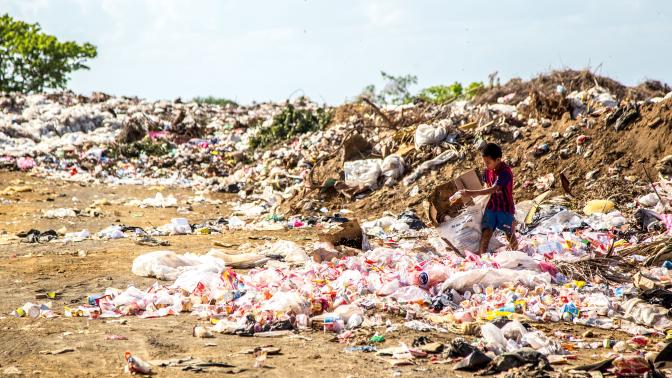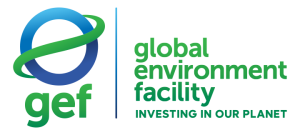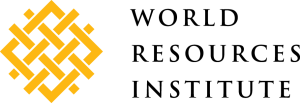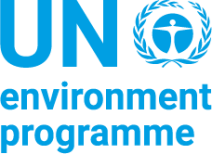GPSC Events
International Conference on Municipal Solid Waste Management
10 October 2019 - 11 October 2019,09:00 am
/
New Delhi, India

Photo by Hermes Rivera on Unsplash
The World Bank organized an International Conference on Municipal Solid Waste Management (SWM) in partnership with Global Platform for Sustainable Cities (GPSC) and in collaboration with NITI Aayog and Ministry of Housing and Urban Affairs (MHUA), Government of India, on October 10-11th, 2019 in New Delhi.
The objective of the Conference was to facilitate knowledge sharing, both international and domestic, with regard to the SWM Sector focusing on SWM technologies, institutional aspects, financing and Public Private Partnerships (PPPs) models and related good practices. The Conference brought together international and national experts, central and state government officials, representatives of Urban Local Bodies (ULBs) from several Indian states, leading private sector companies and NGOs in the SWM sector.
The stage for the conference was set by Dr. Rajiv Kumar, Vice Chairman, NITI Aayog, Government of India through his key note address. Dr. Junaid Kamal Ahmad, Country Director- India, The World Bank Group, New Delhi welcomed the delegates and panelists and shared his views on the SWM sector challenges. Mr. Sameh Wahba Global Director - Urban, Disaster Risk Management, Resilience and Land Global Practice, The World Bank Group, Washington D.C. provided a global perspective of the SWM challenges in his opening remarks.
The conference also provided a platform to disseminate World Bank’s global report, ‘What a Waste 2.0 - A Global Snapshot of Solid Waste Management to 2050’ published earlier in 2018.
Key Takeaways from various Sessions
The conference marked the seriousness, level of commitment, and passion of the delegates that took time from their busy schedules to participate in the conference. There was consensus that Solid Waste Management is a national agenda and a local challenge that needs to be addressed urgently. Stakeholders must continue working towards understanding the sector and developing solutions at scale, leveraging to the extent possible, the private sector and non-government sector. This platform has voiced efforts of all kinds of stakeholders, including members from the private sector and civil society in this sector and proposed implementable solutions.
It is desirable and possible to decouple waste generation rates from income growth, therefore, growing income levels in India need not necessarily result in growth in waste generation rates. There is interest in solid waste management from private sector and the civil society, and the externalities that are addressed by waste management are far too important to ignore. SWM is not just about environmental sustainability, but also about social inclusion, job creation, and most importantly a combination of health and improved competitiveness of cities. The World Bank is willing to work with the state governments and national government in developing solutions and on ongoing initiatives.
Government of India recognizes and is addressing the challenges of solid waste management sector. The World Bank is looking forward to working with the national & subnational governments towards resolving waste management challenges and turning it into an opportunity and foundation for development. The key takeaways from the various sessions are:
Opening / Plenary Session
-
Waste is no longer a side event or a dirty word – it is at the core of the development process. Local government empowerment, informality, and technology are critical elements that need to be considered in a balanced manner when states make investments in the waste sector.
-
Globally, waste generation rate (at 70 per cent) is projected to grow at twice the growth rate of population by 2050 and this calls for efforts and actions to decouple waste generation rates from economic development.
-
Much of the global urbanization in the next 30 years is expected to occur in India. In India the waste challenge has been braced by the topmost leadership and the emphasis is on initiating people-focused movements to drive the efforts.
-
Local governments need to be empowered and adequately equipped for improved service delivery - if they get waste management right, the dividends in terms of growth, poverty alleviation and sustainable development are immense.
-
The initial success of India’s flagship program, the Swachh Bharat Mission is encouraging and the World Bank is willing to work with the Government of India in finding solutions and implementing them.
Session 1: Dissemination of Bank Report (2018) ‘What a Waste 2.0’
The report is based on data collected from 370 cities across 217 countries. It looks at the bigger picture of waste management and analyzes data not only on waste generation and how it is collected, treated and disposed-off, but also on budget requirements, financing service delivery, contribution of the informal sector, and institutional frameworks in SWM sector. The key takeaways from Session 1 are:
-
Globally the total waste generation is expected to reach 3.4 billion tons by 2050 – up by about 70 per cent from 2 billion tons in 2016. This would be twice the projected population growth rate of 35 per cent for the corresponding period.
-
About one-third of the total projected waste will be coming from sub-Saharan Africa and South Asia where the waste generation is projected to almost triple and double respectively. Further, it is observed that waste generation rate is positively correlated to urbanization and income growth. Hence, there is a strong need for decoupling waste generation from increase in income and urbanization through policy initiatives encouraging reduction, reuse and recycling.
-
In low income countries the collection performance of waste itself is very low due to inadequate managerial, technical and financial capacities of local governments – there is a need to appropriately strengthen and empower local governments for better service delivery.
-
Municipal finances are probably one of the most critical aspects when it comes to the solid waste management sector. Local governments should explore all possible options for revenue realization / enhancement specific to the solid waste management service delivery. However, this notwithstanding, local governments should realize that the cost of inaction is much larger than the cost of having a basic integrated waste management system. They should realize that if they do not take appropriate action upfront, they will end up spending way more down the line to address all the negative externalities from mismanagement of waste.
-
About half of the waste management is handled by non-governmental entities – the private sector, non-profit / civil society organizations, which indicates that there is still plenty of room to create the right partnerships and private sector engagement in the sector.
Session 2: Why SWM works in some countries/cities and not others -key issues, needs, and challenges in the SWM value chain
The focus of this Session was to hear from the panelists from Morocco, China, Japan, and India as to how the solid waste management sector looks like and how it evolved over time in their respective countries – the key points for success and also some of the key areas of concern. The key takeaways from Session 2 are:
-
The issue of solid waste management needs to be embraced by all stakeholders, led by the top leadership for successful and sustainable management of the service.
-
Inadequate finances at the local level is one of the critical hurdles to effective solid waste management in developing economies. Even in developed economies like Japan, the national governments subsidize or grant up to 60 per cent of capital costs for treatment facilities.
-
There is a need for effective cooperation (in terms of planning, technical as well financial resources) across different hierarchies of governments to ensure better solid waste management.
-
Setting mandatory targets and effectively monitoring compliance is important for stakeholders to be effective.
-
In India there are several localized initiatives promoting community engagement and micro enterprise around the informal sector, which go a long way in easing the financial pressure on local governments and implementing SWM and should be scaled-up.
Session 3: SWM Financing and PPP
Financial sustainability is one of the key elements of efficient and sustainable solid waste management. It is also one of the key concerns of the private sector that can play an important role in the solid waste management value chain. The experiences in India have been mixed with successes and failures alike. The key takeaways from this Session are:
-
The key issue of local government finances can be addressed to a large extent by designing and structuring SWM tariffs based on a clear estimate of cost of the service and on a cross-subsidization framework. Willingness to pay depends on the quality of service and hence the local government should ensure gradual but tangible improvement in service levels before attempting to charge for the service.
-
There are several risks and uncertainties in solid waste management value chain and hence public-private partnerships, especially in developing countries often hit roadblocks in the initial stages of the project itself. In order to address the various risks, the local government should ensure there is a clear master plan for the solid waste management, unencumbered land is readily available and adequate revenue stream is earmarked / budgeted for the service. Wherever possible and applicable the government should support market development for recovered and recycled products.
-
The private sector in turn should have a well-informed business plan and business model to avoid surprises in future. They should also propose solutions commensurate with the affordability of the local government. The business model should carefully and realistically identify and consider incremental revenue sources, such as from sale of recovered and recycled products, CERs, etc. in addition to the traditional tipping fee.
-
Lastly, the procurement process should not be rushed up and contracts should be carefully drafted with appropriate risk allocation specific to the SWM sector. The RFPs should provide enough details and information on the baseline so that the bidders do not make unrealistic assumptions.
Session 4: SWM Technologies
There are enough mature technologies for different streams and kinds of waste right from the very basic engineered landfill to more sophisticated mechanical-biological treatment, anaerobic digestion and incineration technologies.
-
Cities should choose technologies based on the level of evolution of the upstream elements of the waste management value chain, such as segregated waste collection & transportation and their affordability.
-
There should be a “step-by-step” approach as in case of China. For instance, cities should start with engineering landfilling and gradually upgrade to higher levels of technology alongside measures to ensure appropriate feedstock to the higher levels of technologies.
-
While Japan and China have largely resorted to incineration (including power generation) for disposal of waste, the focus globally is now towards reduction and recycling. In this regard, the focus as well as innovations need to be more towards better collection of source-segregated homogenous waste streams. Solutions include awareness programs for waste reduction & source segregation, digitalization of collection activities, innovative mechanisms for collecting recyclables, mandatory recycling targets, and regulations for use of recycled products.
-
There are innovations being tested in next generation technologies, such as pyrolysis and gasification to generate oil, chemicals and tar from mixed waste or more complex plastic wastes but while this appears a promising solution for the future, as of now all commercial scale initiatives in this regard have failed.
Session 5: Social Inclusion – Cases on Informality, Citizen Engagement
-
One of the most critical aspects of solid waste management is the behavior of the waste generators – the citizens. Local governments are increasingly appreciating this fact and focusing on behavior change through citizen engagement and emphasizing on waste reduction and segregation at source as a starting point, which will solve several downstream problems of collection, transportation, recycling, treatment and disposal of waste.
-
The informal sector, especially in developing economies play a significant role in the SWM value chain – primarily in the collection and recycling activities. Any engagement in improving solid waste management needs to ensure that the informal sector is included and mainstreamed in a manner that ensures them an improved, secure, and sustainable livelihood. There is also a need to focus on exploring new models of micro-entrepreneurship and supporting the informal sector recycling facilities.
-
In SWM sector, sometimes smaller changes can bring about bigger differences. Basic level changes in primary waste collection could provide inexpensive and impactful solutions. Innovative schemes and ideas for making improvements and formalization in the models of primary waste collection should be investigated for system efficiency.
Session 6: Dealing with Plastics related Pollution: Global Plastic Pollution Scenario and Measures to addressing the Ocean Plastics Challenge
-
Various kinds of plastics take several tens to hundreds of years to fully decompose. While issues of plastic wastes degenerating local land resources have been discussed and solutions have been evolved through recycling and reuse, the new challenge is the huge quantities of plastic wastes that have ended up in the oceans and are creating havoc to the marine ecosystem and hugely impacting marine-based economy such as tourism, fishing and shipping industries. Marine plastic wastes are now also entering the food chain and causing serious health hazards in addition to the environmental and economic hazards.
-
The magnitude of the marine plastics waste is not yet fully ascertained but estimates suggest that what we see floating in the oceans is only the macro plastics which are a fraction of the total waste in the oceans. Estimates are that 85 to 94 per cent of the plastics are micro and nano-plastics ending up on the ocean beds.
-
The challenge is that plastics have evolved through years of research and development and have several superior qualities as a material for various uses across almost all applications and finding its alternative is going to take a long time. Plastic as a material itself is difficult to replace, therefore, the focus should be on reduction and recycling and significant measures need to be taken in this regard both on the supply as well as demand side.
Additional Session: SWM Initiatives of the office of Principal Scientific Adviser, Government of India
Waste is a priority for Government of India as established through one of its flagship programs, the Swachh Bharat Mission (or Clean India Mission) launched by the incumbent Prime Minister of India on his first Independence Day Speech as Prime Minister on August 14, 2014.
On the directives of the Prime Minister Office (PMO), Prime Minister's Science, Technology and Innovation Advisory Council (PM-STIAC) has set up the Waste to Wealth Mission.
The office of the Principal Scientific Adviser, Government of India, under the Waste to Wealth mission, aims to identify, develop and deploy technologies to treat waste to generate energy, recycle materials, and extract resources of value. The mission will also work to identify and support the development of new technologies that promise to create a clean and green environment.
The mission will assist and augment the Swachh Bharat and Smart Cities projects by leveraging science, technology and innovation to create circular economic models that are financially viable for waste management to streamline waste handling in the country.
One of the first initiatives of the office is a program on treating 15 sentinel sites where the problem will be assessed in detail and various treatment solutions will be evaluated and selected solution piloted to ground test it. The learnings from this will inform policy and will also be shared with local governments for replication and scale-up.
As on date, four sentinel sites have been taken up – one concerning agriculture waste, 2 cases of cleaning drains and water bodies from MSW, and one case of dumpsite remediation / mining.









